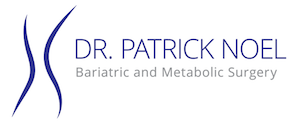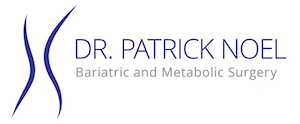Purpose of the diet
Sleeve Gastrectomy and Gastric By Pass are weight loss procedures that will reduce the stomach size, hence decreasing the amount of food consumed by patients.
Patients who are planning to undergo such surgeries should plan ahead major changes in their lifestyle towards healthy approaches to ensure that weight loss is safe and successful.
Post-surgery diet phases
- Phase 1 – Liquid diet (1st & 2nd weeks)
- Phase 2 – Puree diet (3rd week)
- Phase 3 – Soft diet (4th week)
- Phase 4 – Normal diet (from the 5th week onwards)
General guidelines
- Drink enough fluids to keep your body hydrated
- Eat adequate protein
- Take required vitamin & mineral supplements to meet recommended daily allowances (Gastric By Pass patients)
Diet instructions
- Drink 1.5 – 2 litres of fluids a day ; use a straw if needed the first week
- Stop drinking within 30-60 minutes of a meal
- Eat very slowly. Food needs to be well chewed – chew each bite at least 20 times
- Listen to your body’s signal – STOP drinking &/or eating when you are full
- Start your meal with your lean protein to help maximize protein intake
Phase 1 – Liquid diet
Duration: Two first weeks after the surgery
- In this phase you are allowed to consume all fluids (clear or not), such as water, unsweetened pulp-free juices, broths and soups, laban and milk.
- AVOID carbonated beverages, caffeine & citrus.
- Drink at least 8 cups (around 2 litres) of fluids per day.
- Remember to drink slowly, sip by sip, so you feel comfortable.
- Nausea or vomiting could occur the first few days after surgery. Contact your surgeon if they are persisting.
Phase 2 – Puree diet
Duration: Day 15 – Day 21
- This phase food should be blended to a baby food consistency
- You can continue consuming foods allowed in full liquid stage in the phase
- CHEW foods thoroughly to avoid blockage or nausea
- The following are examples of food from each group that should be included in Puree diet phase:
An item of Meat OR milk group should always be combined with any item of fruit OR vegetable OR starch group.
| Meat group | – 2 Tbsp (30gm) cooked pureed lean meats (chicken, fish, turkey are best tolerated) |
| Milk group | – 1 cup fat free milk, or soy milk
– ¾ low fat yogurt (no fruit pieces) – 1 cup sugar-free pudding – ¼ cup low fat Labneh – ¼ cup low fat spread cheese – ¼ cup fat free cottage cheese |
| Starch group | – ½ cup cream of wheat/rice/baby oatmeal
– ½ cup mashed potatoes, sweet potatoes, winter squash – Blended lentil soup |
| Fruit group (no skin or seeds) | – ½ cup pureed peaches, apricots, pears, melon, banana
– ½ cup baby food fruits – ½ cup diluted unsweetened fruit juice (limit to ½ cup a day) |
| Vegetable group | – ½ cup pureed carrots, green beans
– ½ cup baby food vegetable |
Important tips:
- You may have to add fat free milk, clear broth, or fat free gravies to any of the items in the above group and use a blender to make the food a baby food consistency.
- Add non-fat powdered milk or acceptable (check with your physician) protein powder to boost protein amount.
- Try one new food at a time. If you experienced pain, nausea, vomiting, gases or bloating that means you are not ready for this food. Try after few days.
- Portion may need to be adjusted depending on your individual tolerance. STOP when you feel full.
Phase 3: Soft diet
Duration: Day 21 – Day 28
- Follow all the previous guidelines
- In this stage you are allowed to have all the soft food that can be cut using a spoon
Phase 4: Normal diet
After following the previous phases for one month, you may resume eating solid food.
Again, you will need to chew the food very well before swallowing it in order to avoid any discomfort.
Keep in mind that the success of your surgery relies on your change from an unhealthy to a healthy lifestyle. Soft drinks, fatty, sweet foods are to be avoided, and a physical activity is highly recommended.

